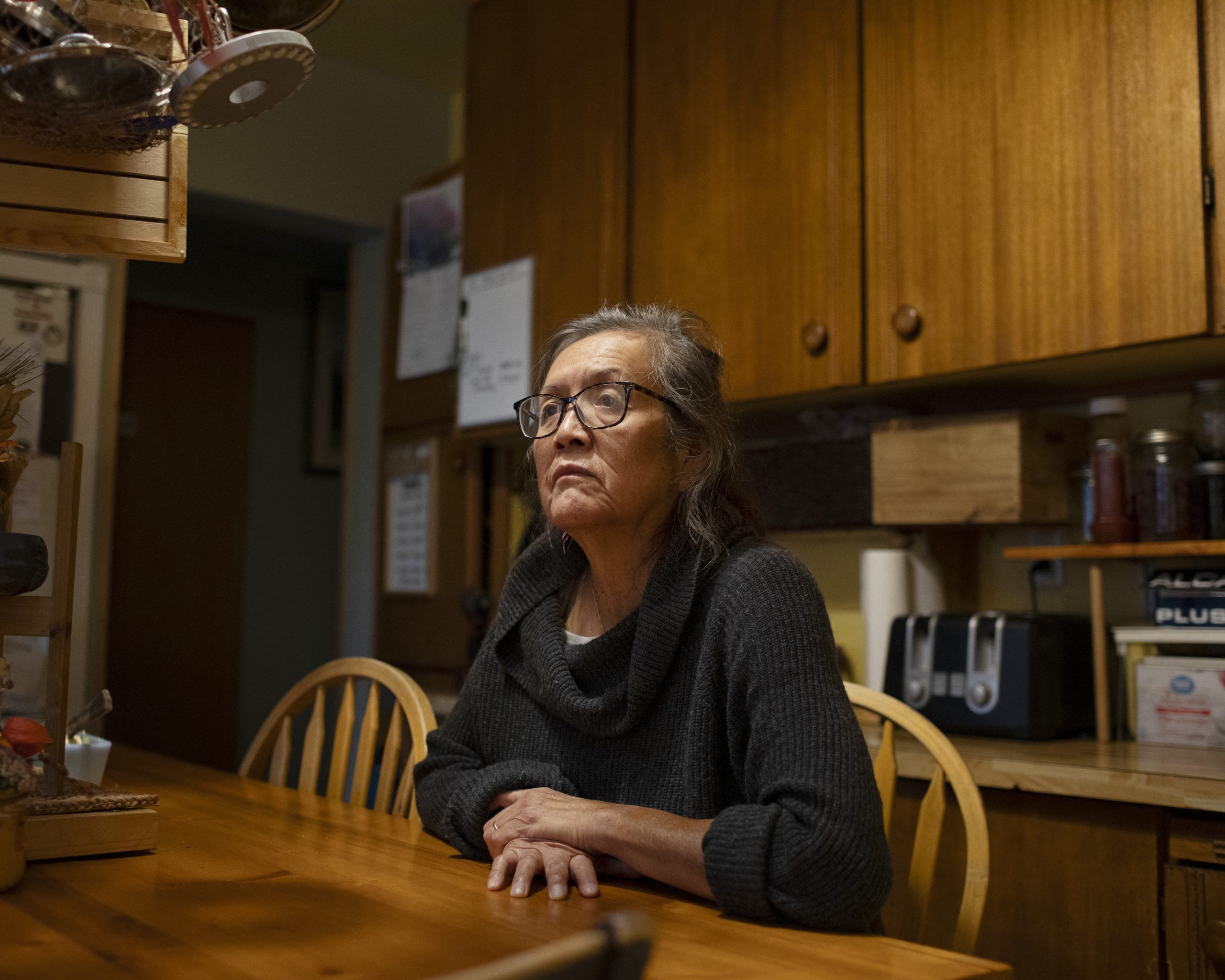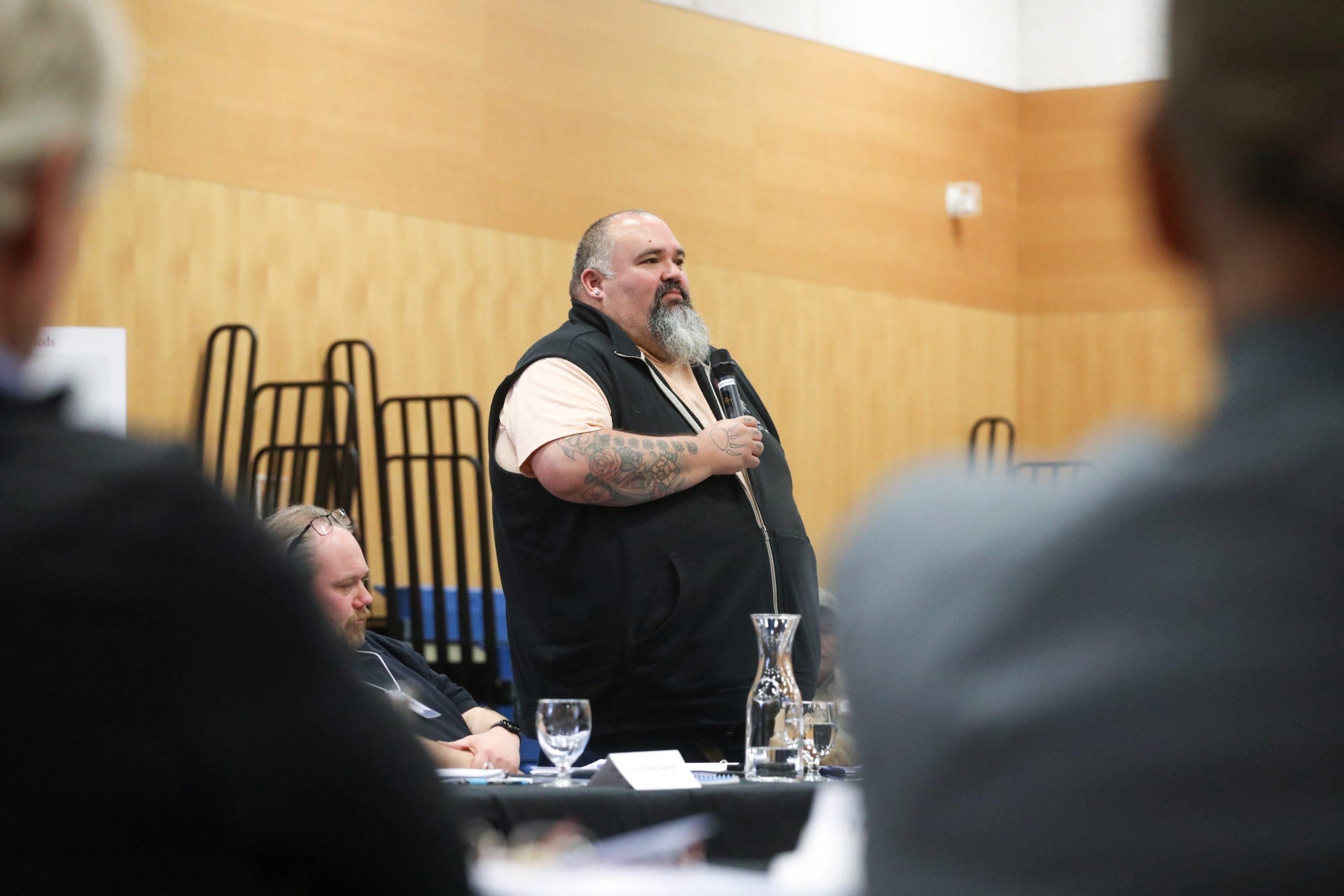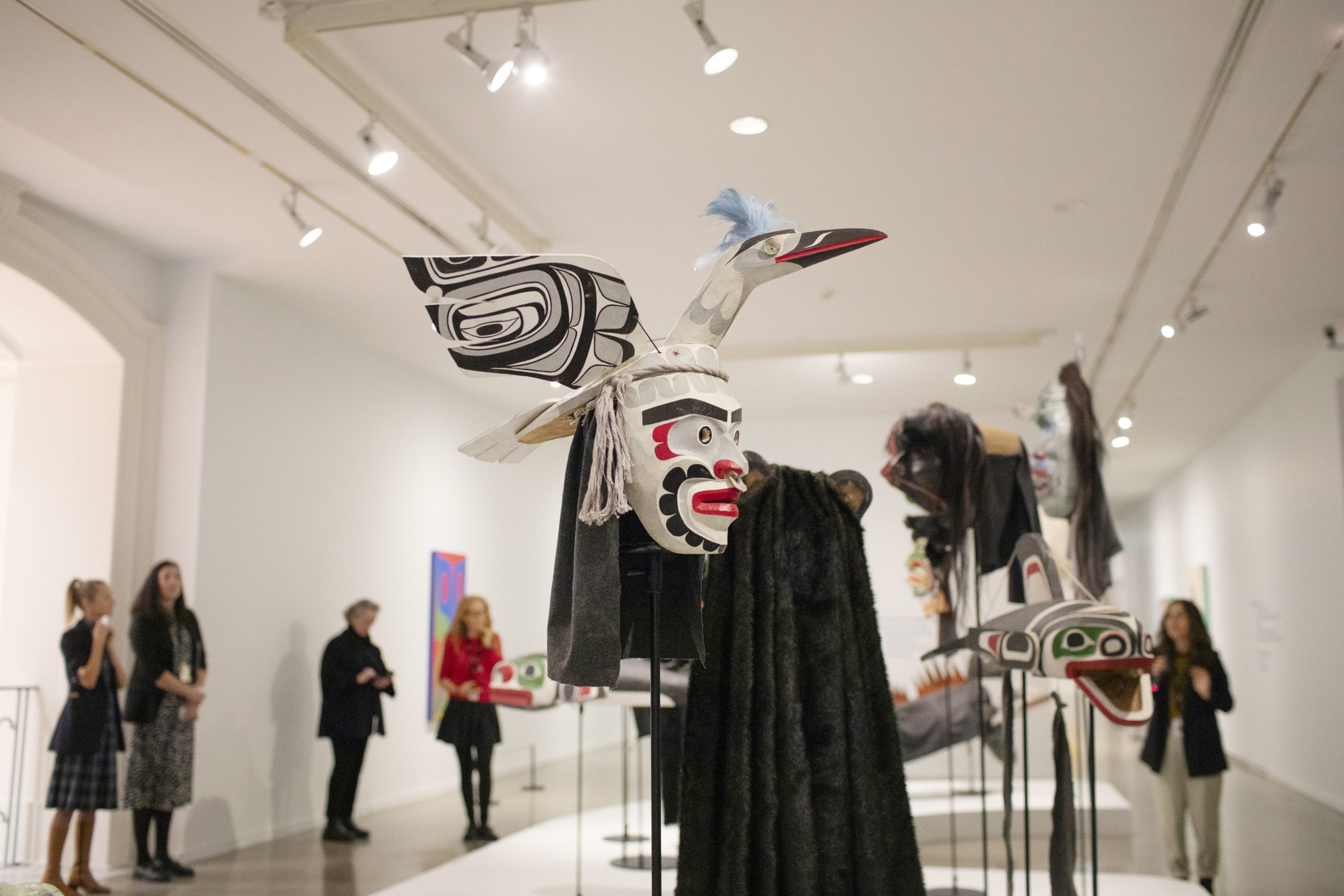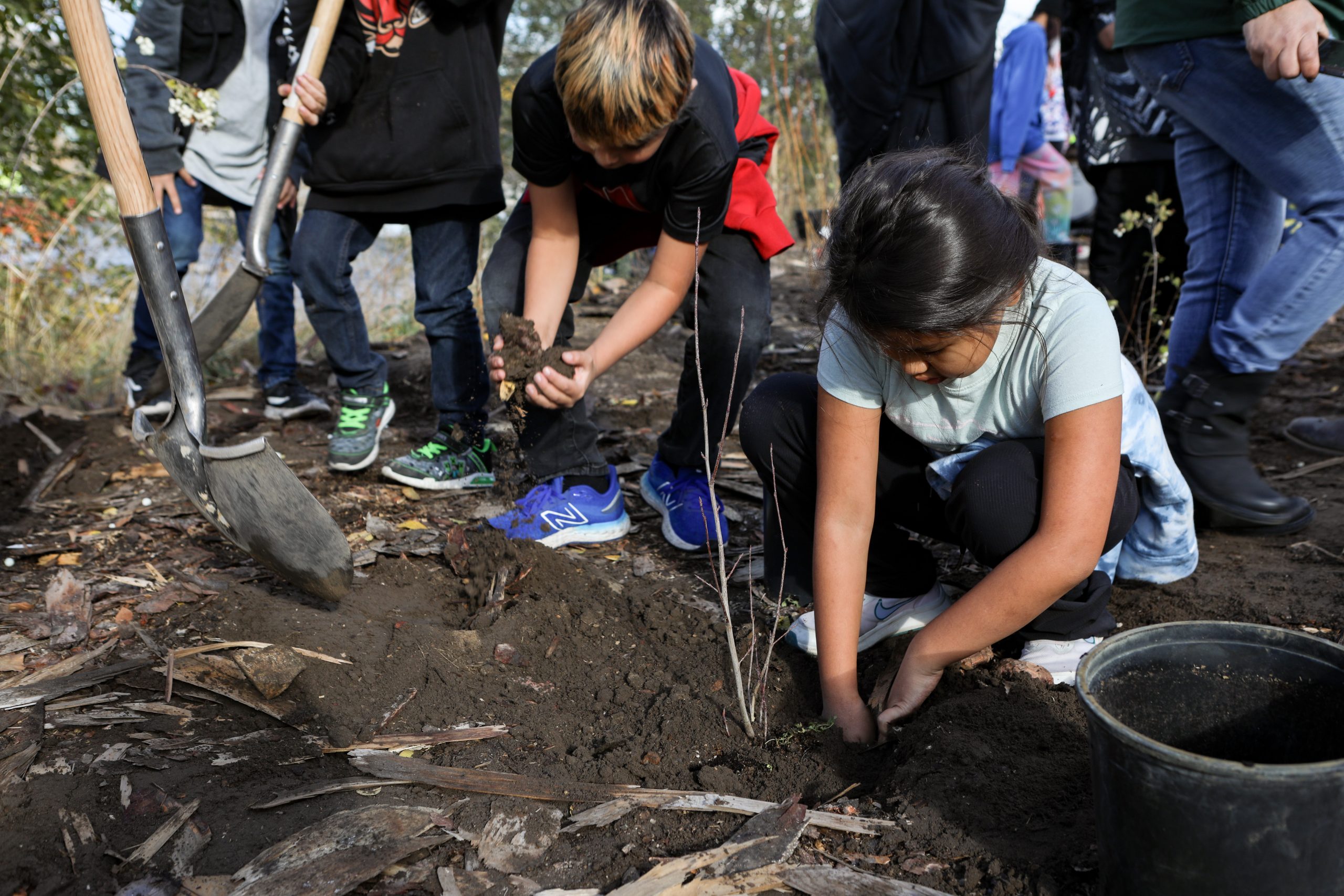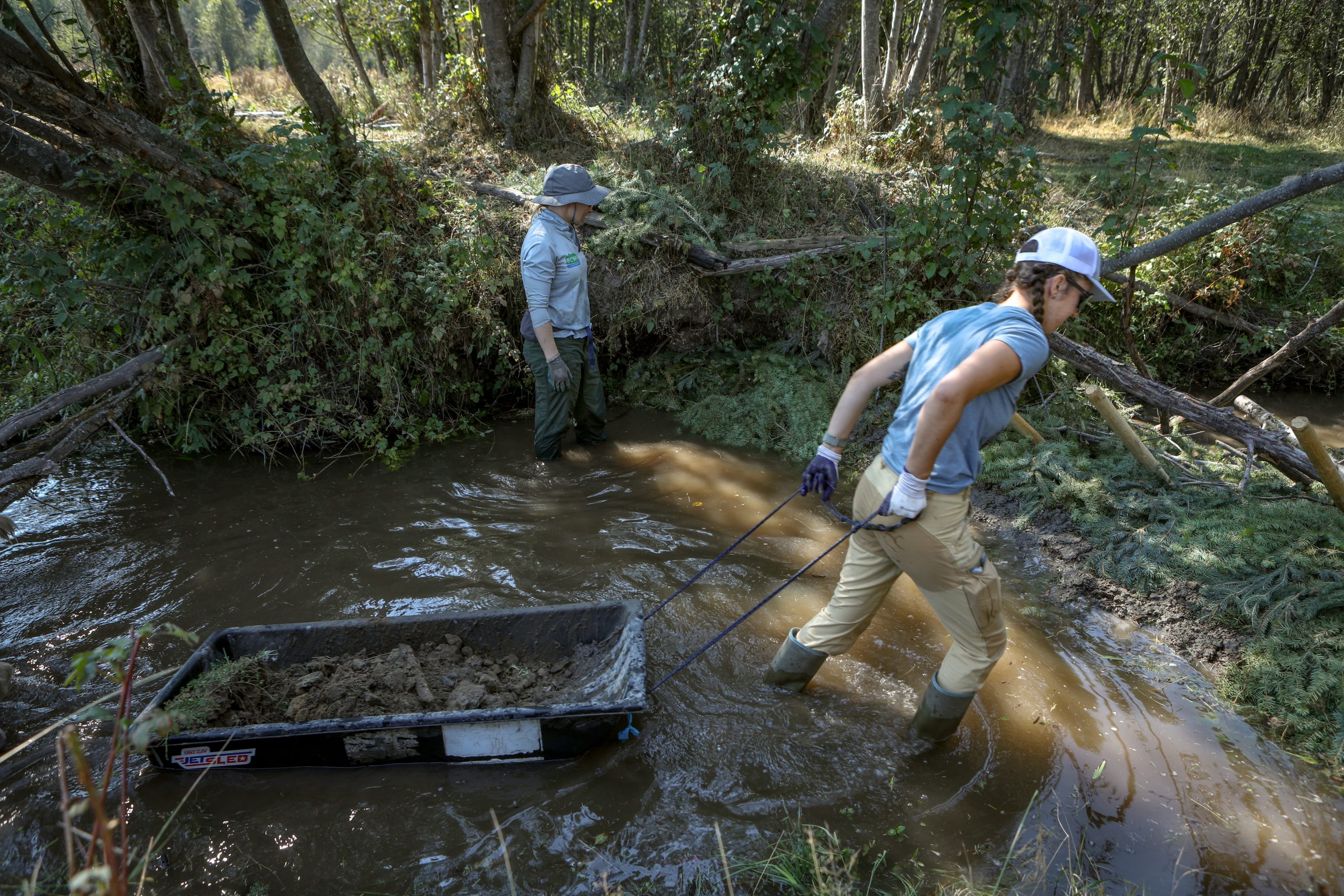In Gitanmaax, new family services department is fighting to protect children
It hasn’t been an easy journey to take power back from colonial child ‘welfare’ agencies — but the newly launched Wila Dildilsdi’m is counting every small victory
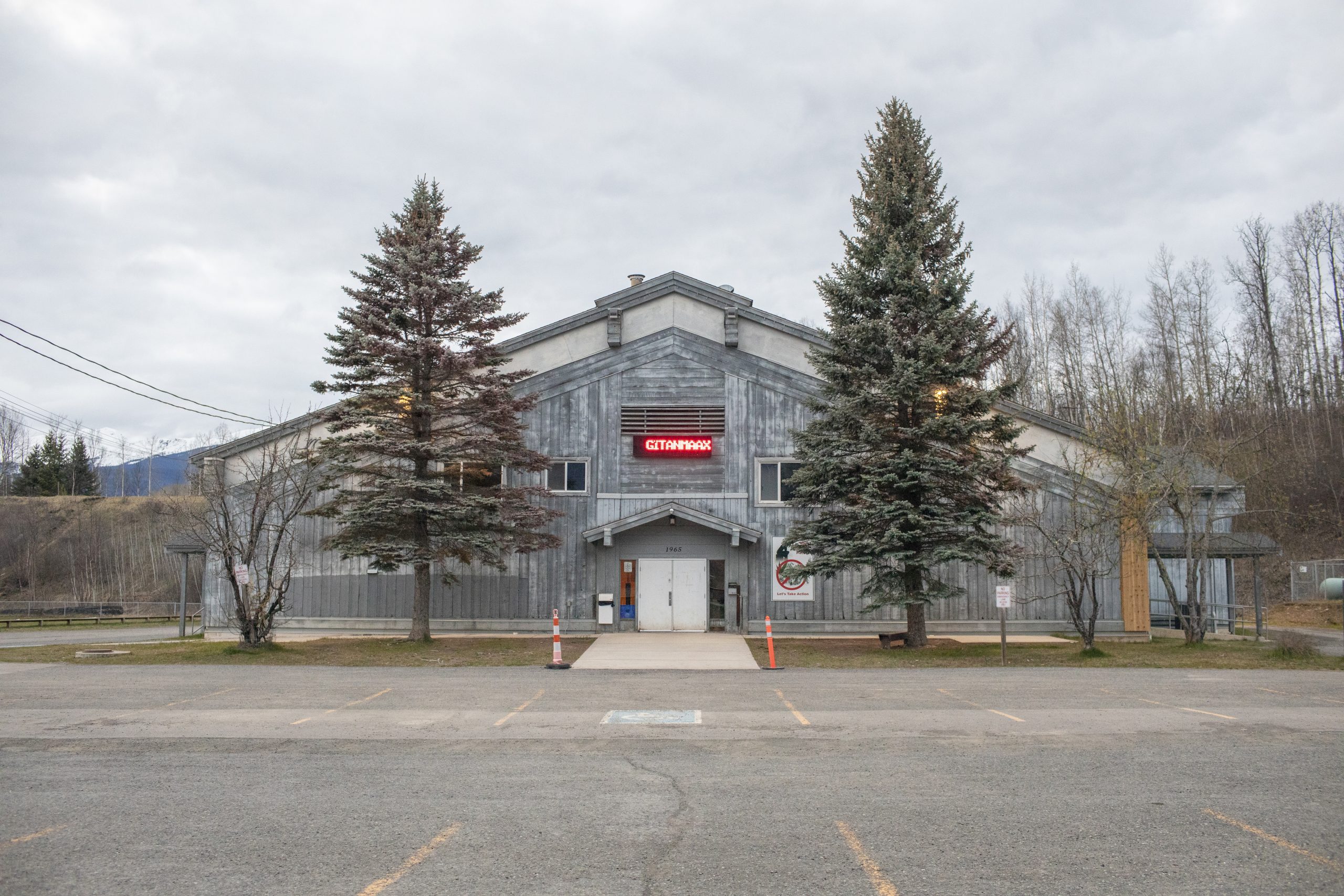
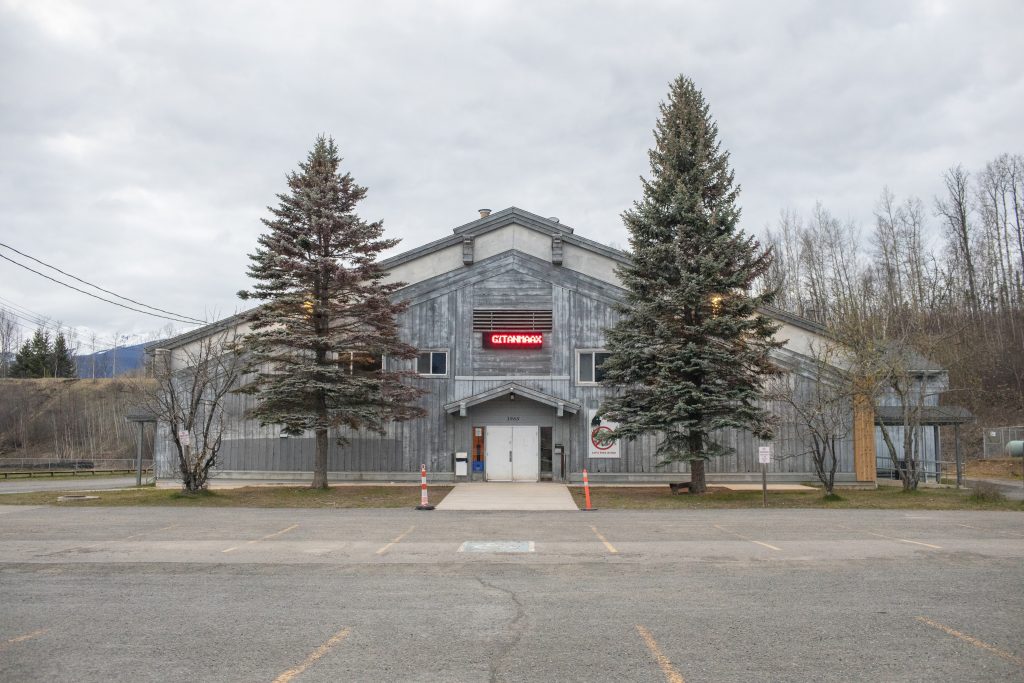
This is the first story in a three-part series about child welfare jurisdiction in Gitanmaax. You can read the second part here, and third part here.
When a young girl handed Jim Woodworth a thank-you card, he hesitated to open it — knowing it might be emotional.
As he read the card aloud, Woodworth’s voice caught.
“I’m from Vancouver Island and I now know that I am also from Gitxsan, Hazelton,” the card reads.
“I am so grateful to know about my Frog Clan and meet my family of which I belong. Thank you for bringing me home.”
The card now sits on display inside the recently opened office for Gitanmaax’s new family services department, Wila Dildilsdi’m — which translates to “how we live.”
Woodworth, Wila Dildilsdi’m’s director, shares the office with jurisdiction lead Julie Muldoe — whose role is to facilitate the community in developing their own child welfare laws. To her, it feels less like an institution and more like a home.
Recently refurbished, it’s bright and modern, with a boardroom where important conversations unfold around a large table. A drum gifted by Sts’ailes First Nation — now reinforcing their own child welfare jurisdiction — sits at the centre. At the door, visitors slip off their shoes, and are welcomed by a small coffee station.
The family services team sprawls across several Gitanmaax-owned buildings in the small village of less than 700 on-reserve members (the remaining three-quarters of the band’s nearly 2,700 members live off-reserve).
Some of these spaces show their age — ceilings sag and the rooms feel worn — but each is slowly being renovated, or relocated, says Muldoe. Her hope is that they will all eventually offer spaces that feel just as inviting as the jurisdiction office.
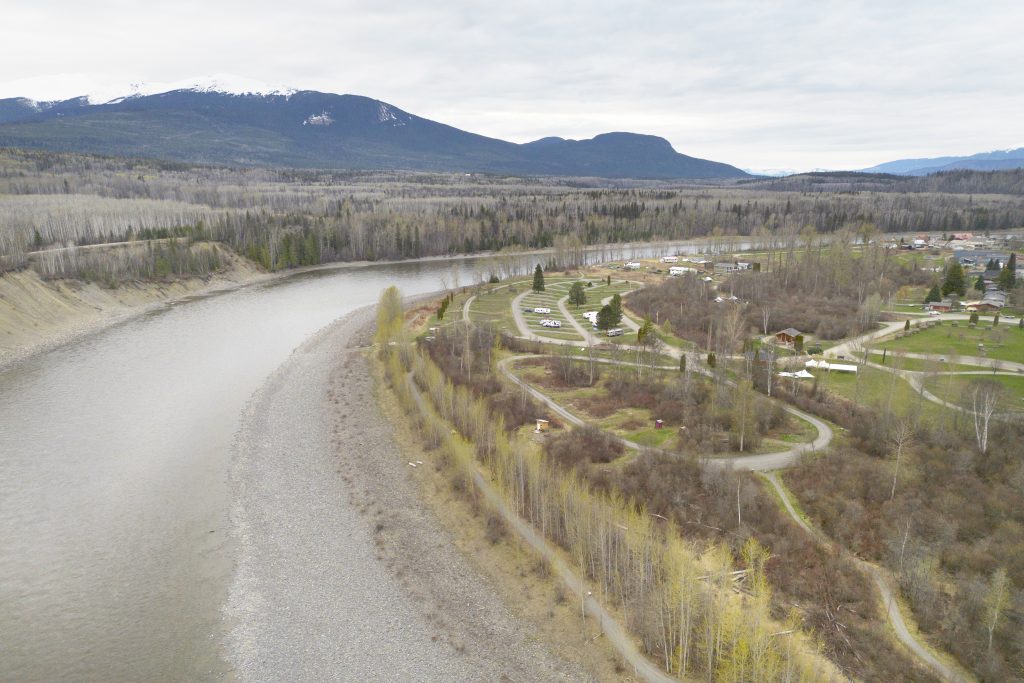
Gitxsan families displaced and marginalized
The small Gitxsan community of Gitanmaax is perched close to where the Skeena and Bulkley rivers converge in northwestern “B.C.” For thousands of years, these rivers and lands have sustained the Gitxsan, providing rich fishing, hunting, and trading grounds across a vast stretch of territory.
Gitanmaax reserve number one sits beside the Village of “Hazelton,” or “Old Town,” founded in 1866 as a Hudson’s Bay trading post. Its position at the river’s confluence made it one of the first non-Indigenous settlements in the province’s north, a hub for river transit and trade before the arrival of the railway.
Over the centuries, settler institutions and colonial policies funnelled power and resources into non-Indigenous hands, while families were displaced and marginalized.
Yet Gitxsan ayook — the hereditary laws and governance of the people — remained intact. It endures in the rhythms of family life, a framework for care and decision-making that has persisted despite disruptions.
It is within this context that Wila Dildilsdi’m anchors Gitanmaax’s approach to child welfare. It’s an approach where culture, kinship, and history are guiding every decision.
Gitanmaax established the department in 2023, following the band’s 2022 strategic planning process, which identified the creation of a dedicated family services department as its top priority.
This followed the passage of Bill C-92, the federal Act Respecting First Nations, Inuit and Métis Children, Youth and Families into law in 2019. The legislation recognizes the inherent right of Indigenous communities to make decisions about the care and well-being of their children — enabling them to develop laws, programs, and services that reflect their cultures, values, and governance systems.
During the department’s first year, Woodworth and Muldoe held many roles. From frontline child protection work to developing a jurisdiction framework, they worked side by side to expand the team and begin its work of bringing children home.
Both Woodworth and Muldoe had long histories working with Gitanmaax members as former child protection workers with the provincial Ministry of Children and Family Development (MCFD). Muldoe remembers early ministry conversations about jurisdiction; she admits she wasn’t entirely sure what it meant at first.
Having also spent 24-years as a probation officer, she initially understood “jurisdiction” only as a legal term.
It wasn’t until she joined Woodworth at Wila Dildilsdi’m that the concept clicked: It was what the Gitxsan had always been doing. In fact, everything they are doing is built to reinforce what already exists within the community — the work that has long been carried out by Gitanmaax matriarchs and leaders in the field.
“Taking care of their kids,” she said, “taking responsibility, and taking action if somebody couldn’t take care.”
Even still, as jurisdiction lead, she says she felt a huge responsibility and sense of overwhelm as she took on the role.
“I’ve never done this before,” she said. “This is totally new for me.”
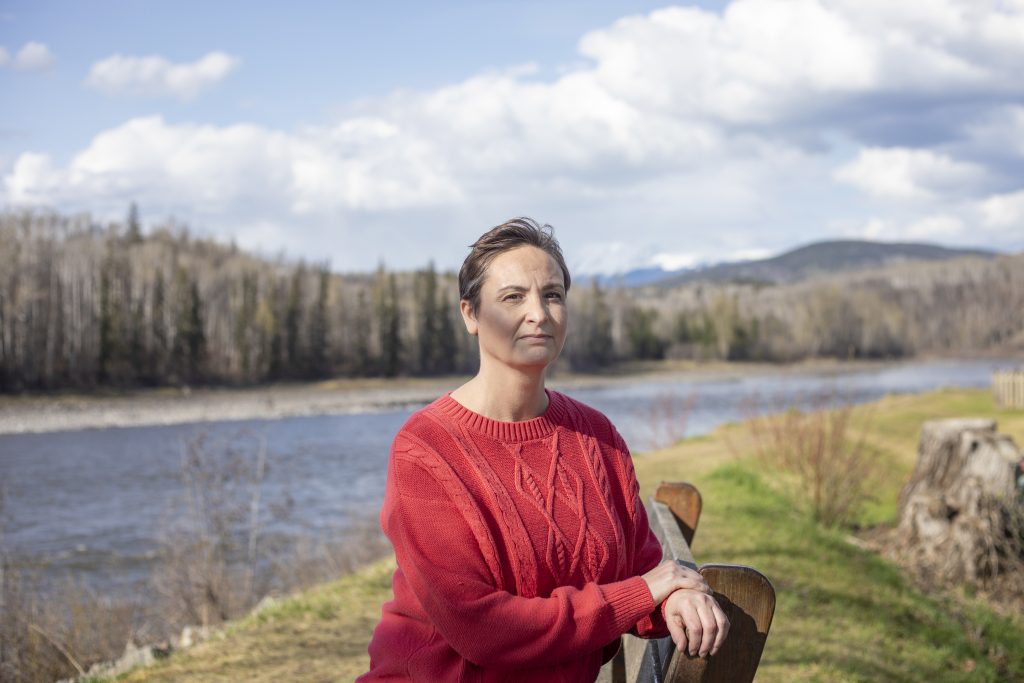
Unpacking what ‘jurisdiction’ means
Under federal rules, at the end of an initial five-year period, it is up to the Indigenous government to decide whether to apply for continued funding to further develop their child welfare laws.
As of Sept, 23, 107 notices of intent to exercise jurisdiction under the Act have been submitted to Indigenous Services Canada (ISC), with 63 requests to enter into coordination agreements.
Of those, 15 agreements have been signed, and 17 Indigenous laws have come into force, signaling growing momentum. However, many Indigenous governments — including Gitanmaax — are still in the early stages of implementing their jurisdiction.
A big part of the challenge, says Muldoe, has been unpacking what “jurisdiction” means to community members, and what the possibilities are.
“We need to keep talking about what those Indigenous laws were pre-contact that helped guide our family processes.”
As part of the department’s engagement work, Muldoe and Woodworth have been filming conversations with Gitanmaax Elders to document Gitxsan ayook — the laws and teachings that guide how children are cared for. These teachings have traditionally been passed along orally, so the process of recording them has become a way to honour that tradition while ensuring it continues. Muldoe says the long-term goal is to create a digital archive, where future generations can hear directly from their Elders.
In one video, Elder Ardythe Wilson explains how it wasn’t until she started organizing to go to court under Delgamuukw, that she learned “just how many definitions of jurisdiction there were.”
“But the one thing I knew, was that I already knew ‘jurisdiction,’ just not as that English term,” she asserted. “I knew it as wil’naat’ahl (family on the mother’s side), daxgyat (power and authority), ayook, adaawak (history of the Wilp, or house group) — that’s our jurisdiction.”
According to Woodworth, community engagement has been key to Wila Dildilsdi’m’s work as they build their services. He describes it as a “grassroots” effort — extending beyond working with the band.
The team has formalized an Elders Advisory Committee, traveled across the province to meet with Gitanmaax members off-reserve, and maintained an open-door policy with the community.
One teaching that emerged from their engagement with the community is that of daxgyat.
“It’s the strength or power that comes from within,” said Muldoe. “That’s what we’re exercising.”
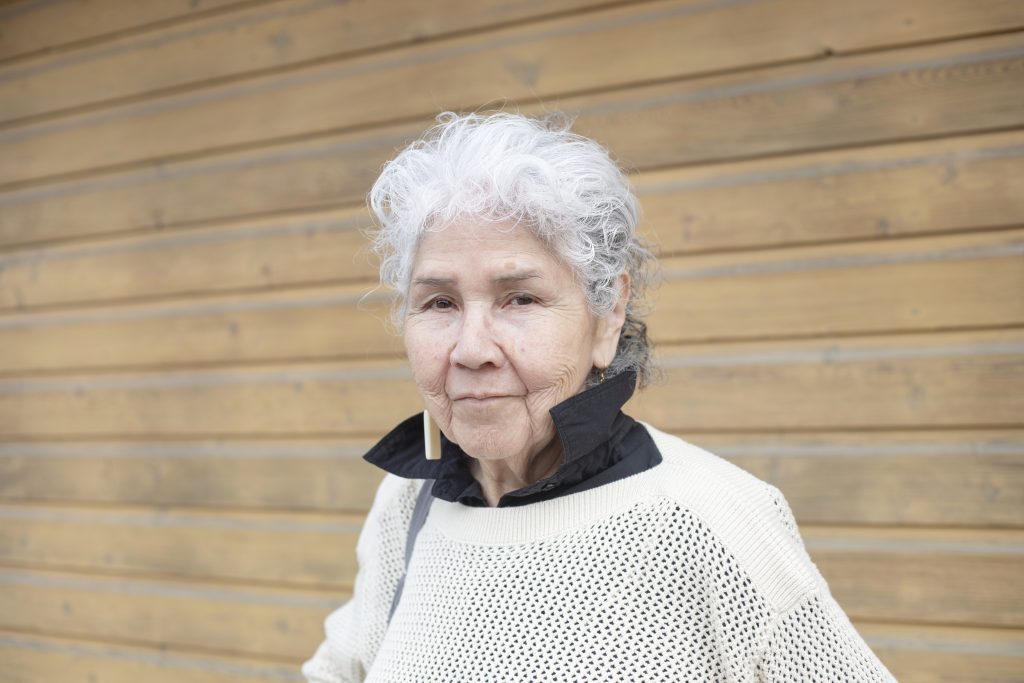
‘We should be following the hereditary system’
For Woodworth, one of the biggest challenges has been finding a way to weave the Gitxsan Huwilp (the nation’s hereditary system) into a service that must also function within the colonially imposed structure of the Gitanmaax band office. They are trying to find a way to protect Gitxsan children within two very different systems, while bringing everyone along.
This tension exposes the limitations of working under a law that operates through a colonial framework.
Even as C-92 grants Indigenous communities jurisdiction over child and family services, it does so within a structure designed and coordinated by the state.
Though “the hereditary system here is alive,” Woodworth emphasized, decisions continue to move through administrative offices rather than hereditary Pdeek (clan) systems — a stark contrast to the Office of the Wet’suwet’en, where chiefs make decisions through the Huwilp.
To begin shifting that framework, Wila Dildilsdi’m made a deliberate choice to name its department “family services” rather than “child and family services,” emphasizing that a child should never be separated from their family or community.
There are about 80 registered Gitanmaax children in “B.C.’s” child welfare system. But those numbers are likely higher, Woodworth cautions, as they depend on MCFD social workers accurately recording Indigenous identity.
Often, he says, a child’s membership or lineage isn’t recorded in what workers have allegedly referred to as the “Ab Tab” — now renamed the Indigenous Tab — a section of the MCFD’s case management database where social workers record information about a child’s Indigeneity. Rarer still is any mention of their Wilp or Pdeek affiliation.
That gap isn’t necessarily the fault of social workers, says Muldoe. The system leaves little room to capture complex layers of identity and kinship. And in some cases, families may not know their connections — knowledge fractured by generations of colonial policies, from residential “schools” to the Sixties Scoop.
In an email to IndigiNews, minister Wickens wrote that the ministry continues to improve how it recognizes the Indigenous identity of children and families, including changes to its case management system in 2014; and through policy changes that came into force in 2020 following Bill C-92 — including amendments that require MCFD to take “all reasonable steps” to confirm whether a child is Indigenous.
But when that information is missed, so is the chance to notify community child welfare representatives — like those at Gitanmaax — who could otherwise be involved in family planning or ensure their children are accurately reflected in provincial statistics.
In some cases, a child’s Wilp is tied to Gitanmaax territory, but they aren’t registered with the band — sometimes because their parents live in another Indigenous community.
“It’s a struggle,” Woodworth said, “knowing deep down that we should be following the hereditary system, but having to work from the band. It’s not black-and-white or cut-and-dry.
“No matter how we do things, it’s going to conflict with another system.”
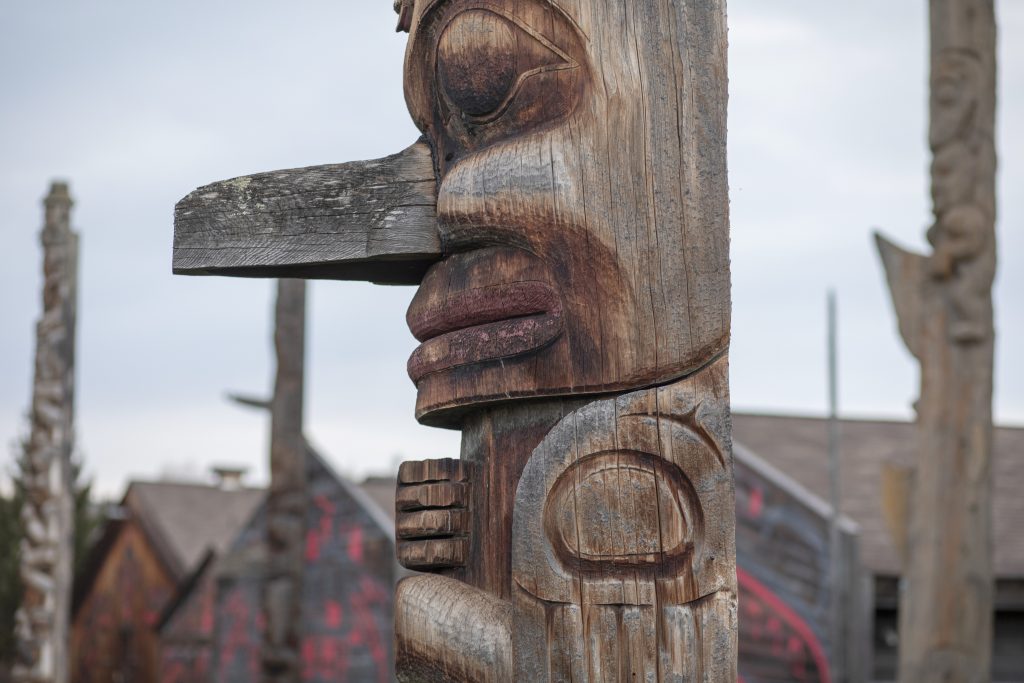
The Gitxsan Nation is made up of 60 Huwilp (house groups) across seven lax’yip (territories), together spanning 33,000 square kilometres — a land base slightly larger than “Vancouver Island.”
“We’re in every single [Gitxsan] community,” said Woodworth.
A child might belong to a Wilp from another village, like Anspay’axw (Kispiox), but be registered with Gitanmaax because that’s where they live. “How does the band navigate the hereditary system?” asked Woodworth, adding that if a Wilp has strong leadership, it may attempt to refuse working with Wila Disdilsdi’m — which operates under band authority.
In other cases, Gitanmaax children are born to two non-Indigenous parents, where the mother gained status through a past marriage that took place before the law changed in 1985. Those children are registered as having status under what’s known as Section 6(2) of the Indian Act, meaning they are recognised members today, but won’t be able to pass their status to their own children unless the other parent also has status.
Woodworth estimates this applies to roughly 15 to 20 members in the community. “It’s not high, but it’s there,” he said.
For now, Woodworth is focused on how Wila Dildilsdi’m can work with the Huwilp — as a band.
“It can’t just be under Gitanmaax for Gitanmaax-registered children,” he stressed.
Part of the solution, he believes, lies in the Supreme Court of Canada’s 1997 Delgamuukw decision, which affirmed the authority of hereditary governance and the role of land stewardship in Gitxsan law.
Drawing on that precedent, Woodworth envisions Wila Dildilsdi’m shaping its work around the hereditary system — building relationships with Huwilp, honoring their authority, and ensuring children are supported within the structures of their own communities.
One of the challenges in this work is the shadow of intergenerational trauma that looms over Gitxsan communities. Huwilp most affected by this history often see more of their children entering the child welfare system.
“How do we strengthen that in some way?” asked Woodworth. “It’s a question for the Huwilp because we still want the kids to know where they’re from, while also making sure families are healthy and supported.”
Woodworth says the community is split when it comes to governance. Roughly a third of members insist on going through the hereditary system, another third rely on the band council, and the final third would rather steer clear of both.
But one of the hereditary system’s biggest advantages, Woodworth says, is its stability. Unlike the band council, which operates on two-year voting cycles that require Wila Dildilsdi’m to constantly seek approval, the hereditary system offers a steadier path for decision-making and long-term planning.
Technically, the band could turn around and reject any and all proposals from Wila Dildilsdi’m, which Woodworth says makes it “difficult to balance,” in his director role.
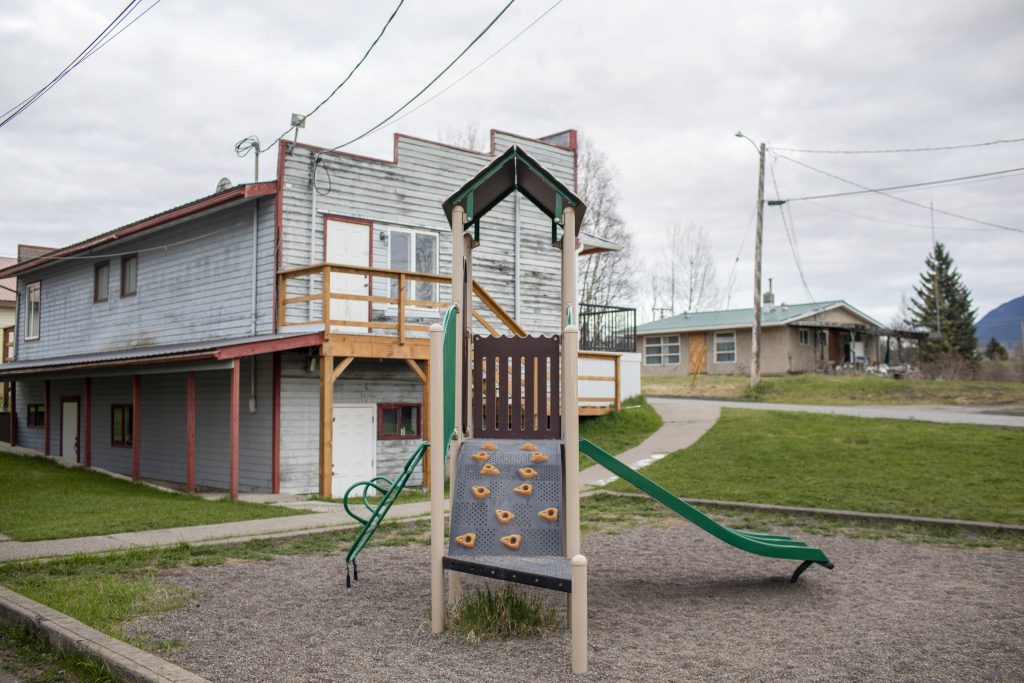
‘Care for our families and children according to our laws and customs’
If navigating the band and hereditary systems wasn’t challenging enough, Wila Dildilsdi’m is also negotiating agreements with both the federal and provincial governments regarding jurisdiction.
Woodworth admits they’ve only just begun engaging with the federal government.
“We’ve barely dipped our toes in,” he said.
But finalizing the band’s community agreement — also known as a “92.1 agreement,” under the British Columbia Child, Family and Community Service Act (CFCSA), which will outline how Gitanmaax intends to work with the province in exercising its jurisdiction — has taken a lot of time and energy.
Even though a 92.1 community agreement isn’t required before exercising jurisdiction, because it is legally binding, it provides a clear process for resolving disputes or non-compliance, Muldoe explained.
When Kirsten Barnes was elected Gitanmaax band Council Chief in 2024, one of her early priorities was ensuring Wila Dildilsdi’m focused on completing a 92.1 community agreement and signing on with the province. She wanted to make sure that the current council had the time and capacity to work through it.
Barnes, also a lawyer with the B.C. First Nations Justice Council — where she has represented family law cases involving Gitanmaax children — says it’s essential to build a “collaborative, transparent, and accountable relationship with MCFD that recognizes Gitanmaax’s inherent right and responsibility to care for our families and children according to our laws and customs.”
According to Barnes, the province’s CFCSA gives excessive discretion to MCFD and provincial courts to decide Gitxsan children’s futures — often with little regard for the importance of language, culture, and meaningful connection to community.
Barnes hoped this would change after Bill C-92 became law. But progress has been slow.
“At this point, our best option to self-determine the future of our people is to reach an agreement with MCFD,” she said, “one that centres Gitxsan child-rearing practices and upholds our inherent right to act in the best interests of our families and children.”
Reconciliation efforts — not mere talk
When Wila Dildilsdi’m approached the ministry about creating its own community agreement, Muldoe says they were handed a ministry template outlining what a community agreement should look like.
Staff and members of the Elders advisory committee found this troubling — they wanted the agreement to reflect Gitxsan values, language, and governance, not a provincial blueprint.
Further, there was no money to support Wila Dildilsdi’m to develop its agreement. They’d only receive a $30,000 payment — once the agreement is signed.
“It’s essentially a signing bonus,” said Muldoe. “That didn’t sit well with us.”
IndigiNews asked MCFD at what stage funding is provided for communities developing 92.1 community agreements. The ministry did not answer that question.
After Barnes and others met MCFD’s Assistant Deputy Minister, they were told there’s no money to help develop a 92.1 community agreement — if they wanted funding, they’d need to apply for a grant.
“It took me back to why I left the ministry,” said Muldoe. “They’re always talking about reconciliation, but when it comes right down to it, there’s no effort.”
Woodworth says simply filling in the ministry’s provided template would only make Wila Dildilsdi’m feel like just another Indigenous child and family services delegated agency.
“So why would we do it?” he asked. “We don’t need to dismantle a system in place — we have to put forward our own model.”
Seeing little choice, Wila Dildilsd’m opted to create its own 92.1 agreement, at its own expense.
IndigiNews asked MCFD whether funding is available to support Indigenous communities who want to create their own community agreements — and if not, how the ministry expects communities to create self-determined agreements without financial support.
The ministry did not answer IndigiNews’ question on funding issues.
“These agreements are a pivotal step on the path to full self-determination,” the ministry responded in an email.
“We will continue working with the federal government, First Nations, and Indigenous partners to support self-determination in child and family services, including First Nations who wish to provide services under their own laws. We are currently working with all our partners to co-develop a funding model that works for each community.”
But it’s not just provincial agreements straining Wila Dildilsdi’m’s capacity.
Woodworth said it’s also unclear whether Wila Dildilsdi’m will receive the full five years of capacity-building funding originally promised by the federal government to support the development of their child welfare laws and advance jurisdiction. In recent communications with ISC, he says the department’s position has shifted, approving only the budget for the next two years, which would carry Wila Dildilsdi’m through year four of the five-year funding period.
“They’re changing the rules in real-time,” he said.
Meanwhile, it’s been reported that ISC is reducing its spending by up to 15 per cent over the next three years.
In an email to IndigiNews, ISC said that for fiscal year ‘20-’21, the federal government announced funding to support capacity building for jurisdiction over five years, beginning in ‘20-’21, which was then extended for an additional two years from ‘25-’26.
Funding amounts depend on “distinct circumstances of each applicant,” said the ISC, including a community’s location, size, the number of proposals received in a fiscal year, and the total funding available within a fiscal year.
For multi-year proposals — such as Gitanmaax’s — ISC said that funding can only be approved one fiscal year at a time. Continued funding depends on “funding recipients achieving their objectives for the prior year, the availability of funds for the given fiscal year, and the continuation and renewal of capacity-building funding.”
“We assumed five years’ funding meant five years — not that the program is being renewed every couple of years,” said Woodworth.
Woodworth added that the year-to-year approach “does not seem to align with the fourth Call to Action of the Truth and Reconciliation Commission, or Canadian Human Rights Tribunal rulings,” which call on all levels of government to commit long-term, sustainable funding for Indigenous child and family services.
Woodworth added that when applying for capacity-building funds through ISC, the community is met with “outrageous questions” — the same requirements asked of large nations, despite Gitanmaax being a much smaller community.
IndigiNews asked ISC to confirm whether their capacity-building funding application process is standardized for all Indigenous governments and organizations, regardless of size and capacity to navigate onerous applications.
ISC did not answer that question, but provided a statement that said “funding is available to help Indigenous groups and their governing bodies explore their readiness to exercise jurisdiction and prepare for discussions about coordination agreements.”
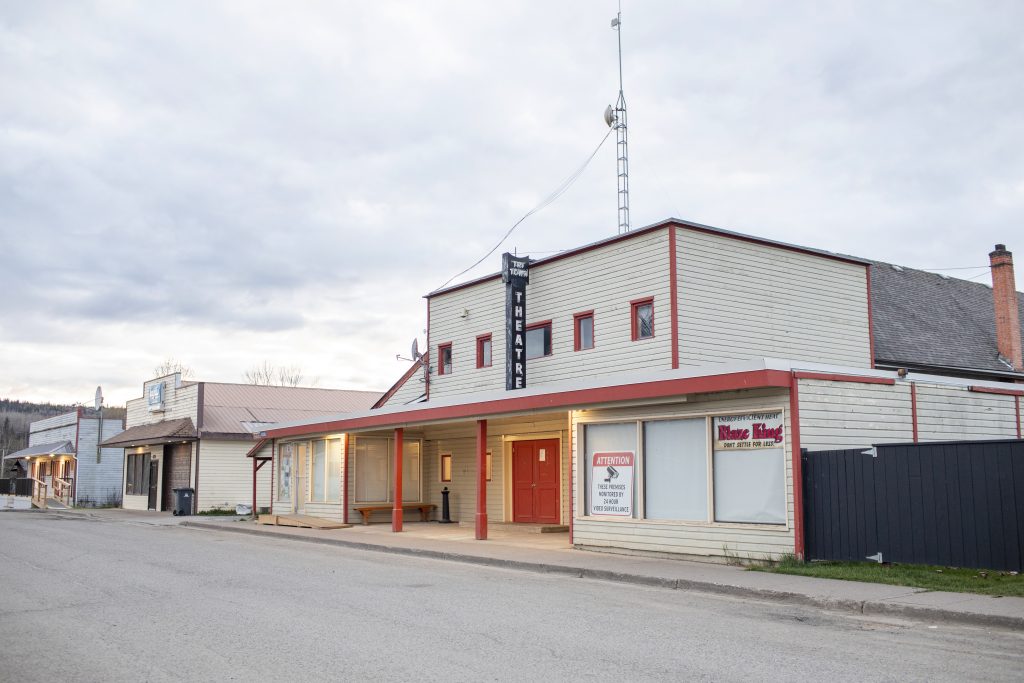
Even small Gitanmaax wins are ‘counted as a success’
Muldoe stressed the need to recognize even small victories in this difficult work.
“You don’t always walk away every day feeling like you’ve done something great, and that you’ve changed the world,” she admitted.
But sometimes, the wins are quiet and profound.
She recalled Elders sharing Christmas dinners with Gitanmaax children in the child welfare system — moments that have blossomed into ongoing connections.
Some grandmothers continue to visit, cheer at kids’ hockey games, and remain present in the children’s lives.
“It may seem insignificant,” Muldoe said, “but it’s a start, and that has to be counted as a success.”
Another example of these subtle wins came when a struggling mother recently attended a workshop designed for her — and fully grounded in Gitxsan teachings.
Muldoe and Woodworth try to weave culture throughout every program and department, ensuring these small but powerful moments can reach everyone they serve.
This approach also includes using Gitxsanimx, the Gitxsan language, to rename titles and departments — for example, the term daxgyat — the strength or power that comes from within — is often used among staff and Elders when they talk about jurisdiction.
Translating single English words into Gitxsan has been challenging, Woodworth explains, because a single concept in English often requires a full phrase in Gitxsan.
He sees this as the way forward though, if Wila Disdilsdi’m is to honour Gitxsan ayook and wila loohl (ways of being).
Muldoe notes that the journey has been full of lessons, with the team often having to pivot, adapt, and try new approaches again and again.
She believes it’s important for the community to see and hear this process — to witness that when mistakes are made, they are acknowledged and corrected. For her, the work is as much about learning, adjusting, and being accountable as it is about the outcomes.
To advance the conversations about Gitanmaax jurisdiction, Woodworth says it’s essential to engage the First Nation’s entire membership.
Decisions can’t be based on just a few people’s ideas; they need to reflect the perspectives of the whole community. For him, the process has to be collective, ensuring everyone has a voice in shaping how the work moves ahead.
Woodworth stressed that this work isn’t about positioning the band council and hereditary systems as opposing forces.
“The band council has been very supportive of our efforts, and the hereditary chiefs too,” he said. “The challenge is figuring out how we all work together as a collective — band and hereditary — to move things forward in the best interests of our children.”
Just as the nation did decades ago in its ground-breaking Delgamuukw Supreme Court victory, Woodworth says Wila Dildilsdi’m needs to connect children to the land, water, trees, and animals of the Gitxsan lax yip.
“So they know where they’re from and that they belong,” Woodworth reflected. “Jurisdiction is providing hope.
“But there’s not much room for us to maneuver, and we have to do things differently.”
Editor’s note: This story was produced as part of Spotlight: Child Welfare, a collaborative journalism project that aims to improve reporting on the child ‘welfare’ system. Tell us what you think.
Author
Latest Stories
-
‘Bring her home’: How Buffalo Woman was identified as Ashlee Shingoose
The Anishininew mother as been missing since 2022 — now, her family is one step closer to bringing her home as the Province of Manitoba vows to search for her
-
After Indigenous teen’s stabbing, his family says the system failed to stop his bullying
Foster parents in ‘Courtenay, B.C.’ speak out after a string of alleged incidents targeting them and their 16-year-old foster son, as they wait for trial
-
‘We all share the same goals’: Tŝilhqot’in and syilx foresters learn from each other
Nk’Mip Forestry and Central Chilcotin Rehabilitation visit their respective territories, sharing knowledge and best practices



